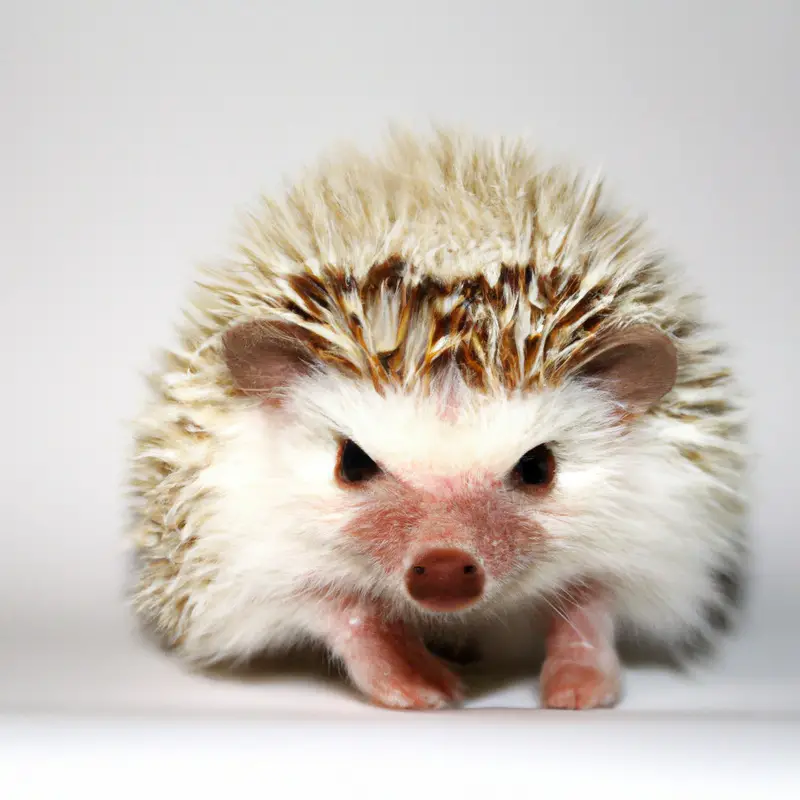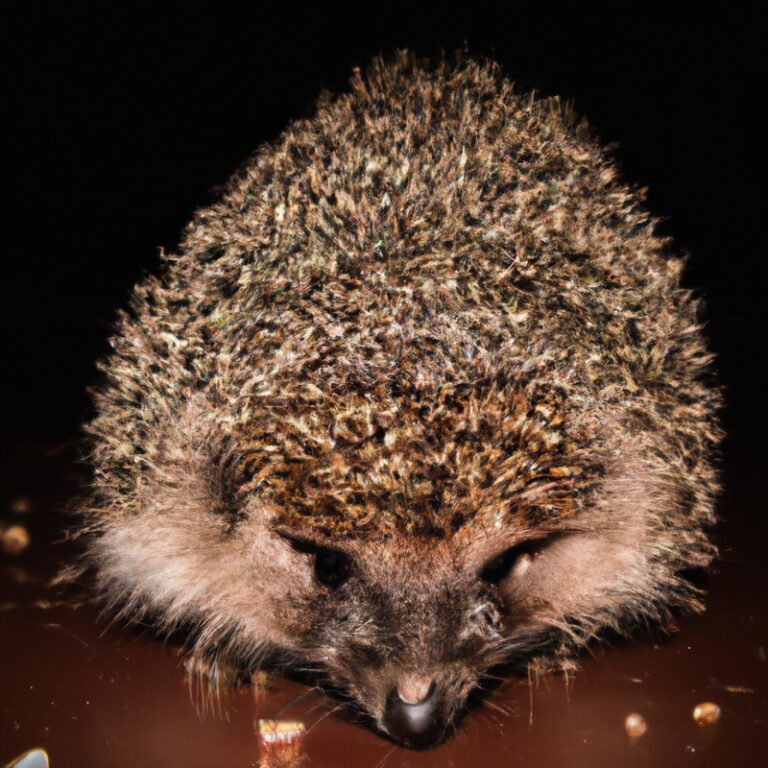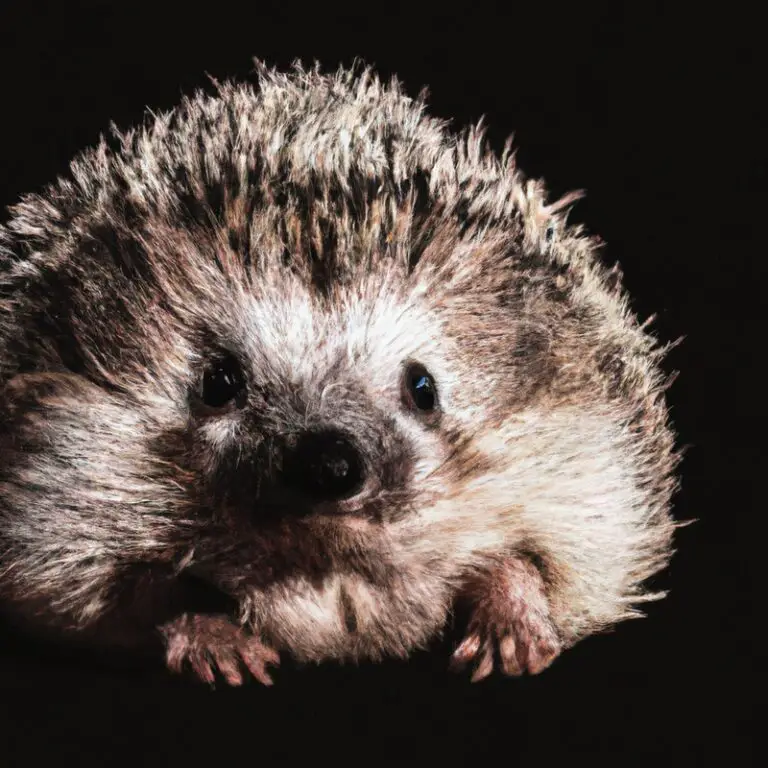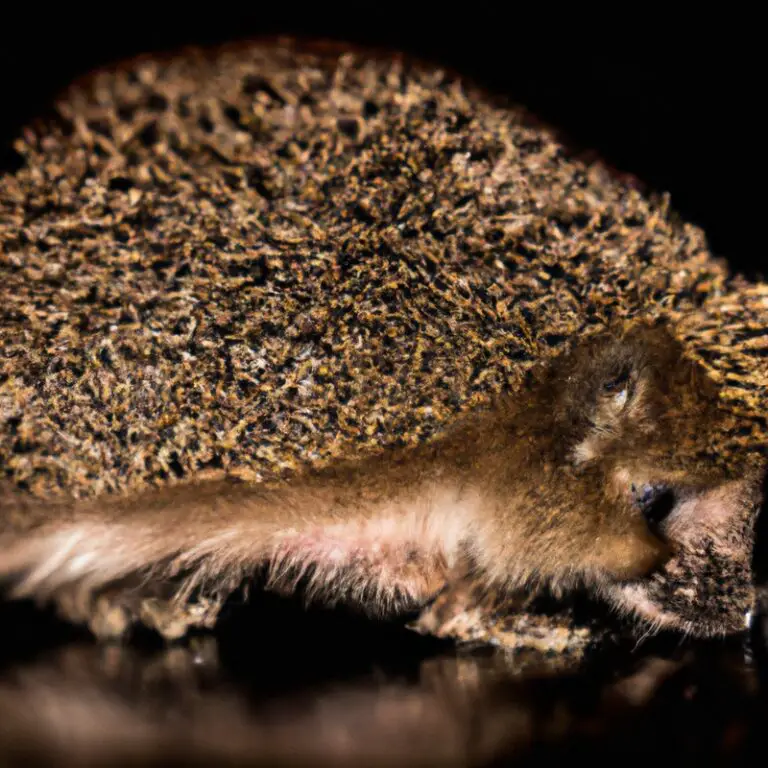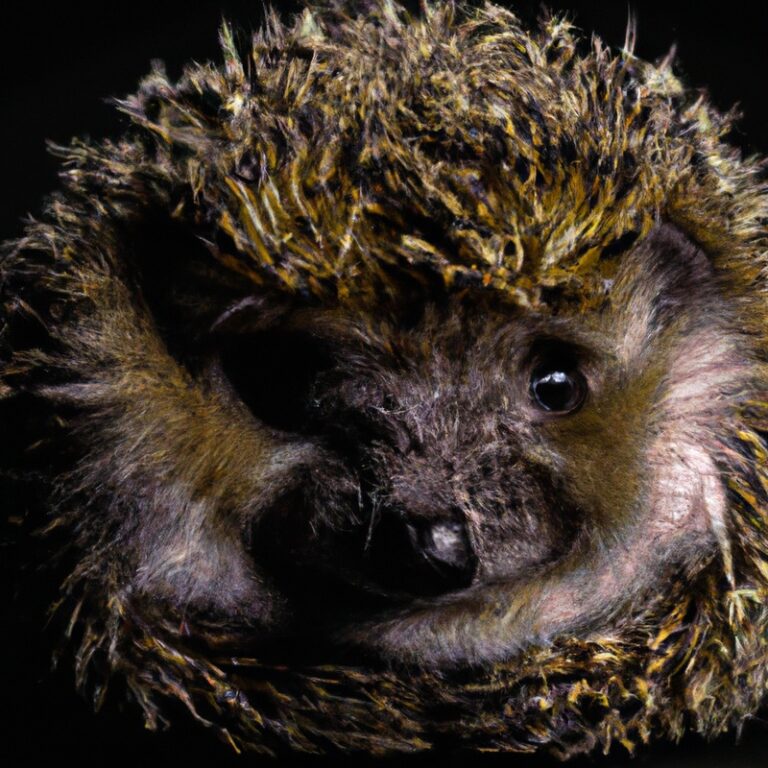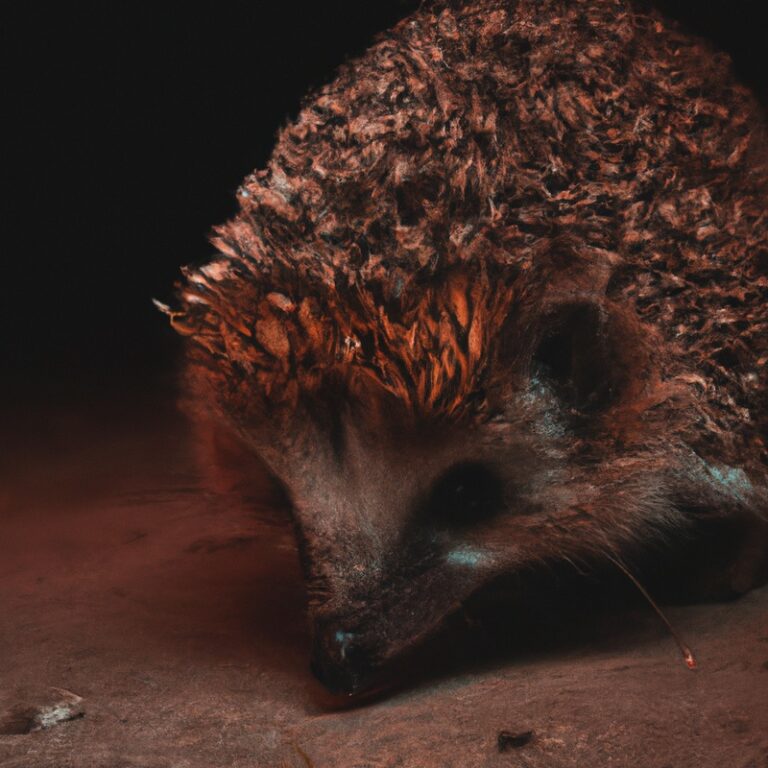What Is The Hedgehog’s Role In The Ecosystem?
Key Takeaways:
- Hedgehogs play a vital role in the ecosystem by controlling pest populations such as slugs and insects.
- Hedgehogs act as seed dispersers, helping to maintain plant diversity in their habitats.
- The decline in hedgehog populations can have negative effects on the overall balance of the ecosystem.
- Conservation efforts should focus on protecting hedgehog habitats to ensure the ecological stability of their ecosystems.
Have you ever wondered what role hedgehogs play in our ecosystems?
These adorable creatures may seem small and unassuming, but they actually have a vital role to play in maintaining the balance of our environment.
As predators, hedgehogs help control insect populations, keeping them in check and preventing potential pest outbreaks.
Additionally, they play a crucial role in seed dispersal, aiding in the growth and diversity of plant species.
In this article, we will explore these fascinating aspects of hedgehogs’ ecological role, their impact on biodiversity, and why they are considered a keystone species.
Stay tuned to discover more about these spiky little ecosystem heroes!
| Hedgehog’s Role in the Ecosystem | Description |
|---|---|
| Predator Control | Hedgehogs feed on insects, snails, slugs, and small vertebrates, helping to regulate their populations. |
| Seed Dispersal | Hedgehogs consume fruits and disperse the seeds through their droppings, promoting the growth of various plant species. |
| Garden Pest Control | Hedgehogs are natural pest controllers, feeding on garden pests such as beetles, caterpillars, and snails, reducing the need for chemical pesticides. |
| Soil Aeration | As hedgehogs dig and forage in the soil, they contribute to soil aeration, which improves nutrient circulation and supports plant growth. |
| Prey for Predators | Hedgehogs serve as prey for larger predators such as foxes, owls, and badgers, helping to maintain the balance within the ecosystem. |
| Indicator Species | Hedgehogs can indicate the health of an ecosystem. Their presence or absence can provide insights into the overall biodiversity and ecological conditions of a habitat. |
Ecological Role of Hedgehogs
Hedgehogs play important roles in ecosystems as predators and as contributors to insect control and seed dispersal.
Hedgehogs as predators
Hedgehogs, despite their cute appearance, are actually predators. They play an important role in the ecosystem by controlling the population of small invertebrates, such as slugs and snails.
Hedgehogs have sharp teeth and long tongues, which help them catch and eat their prey.
They are natural insect controllers, keeping the numbers of these pests in check. In this way, hedgehogs contribute to maintaining the balance of the ecosystem and reducing damage to crops and plant life.
Their predation also provides a valuable source of food for other predators in the food chain.
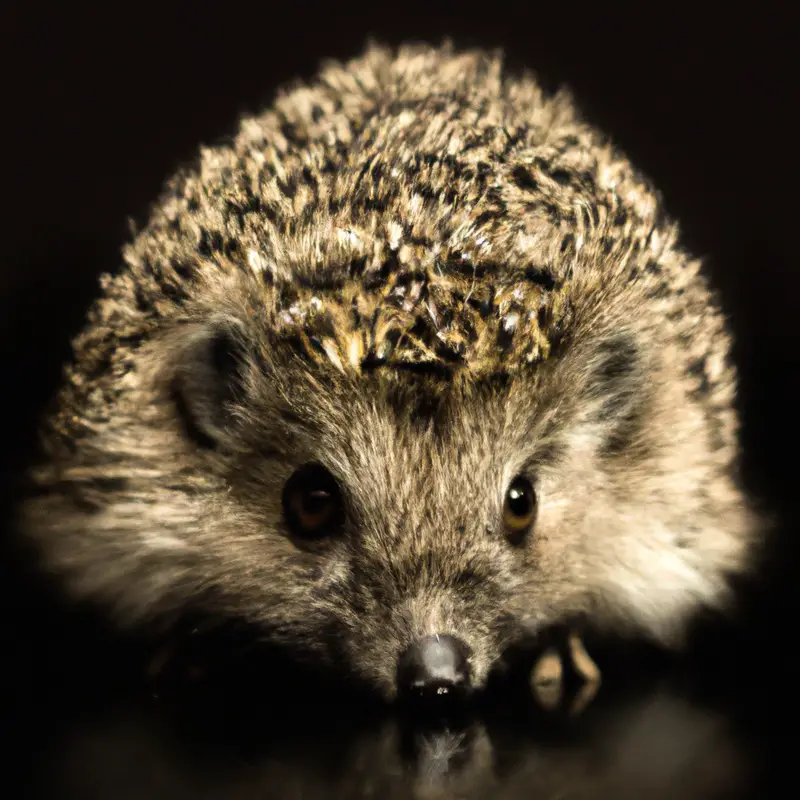
Hedgehogs’ impact on insect populations
Hedgehogs play an important role in ecosystems by controlling insect populations. These spiky little creatures are natural predators of insects like beetles, slugs, and caterpillars.
By feeding on these pests, hedgehogs help to keep their numbers in check and maintain a balanced ecosystem.
Their appetite for insects helps to protect plants and crops, as well as reduce the spread of diseases carried by insects. In this way, hedgehogs contribute to a healthier environment for both humans and other animals.
So next time you see a hedgehog, remember to appreciate their vital role in keeping insect populations in check.
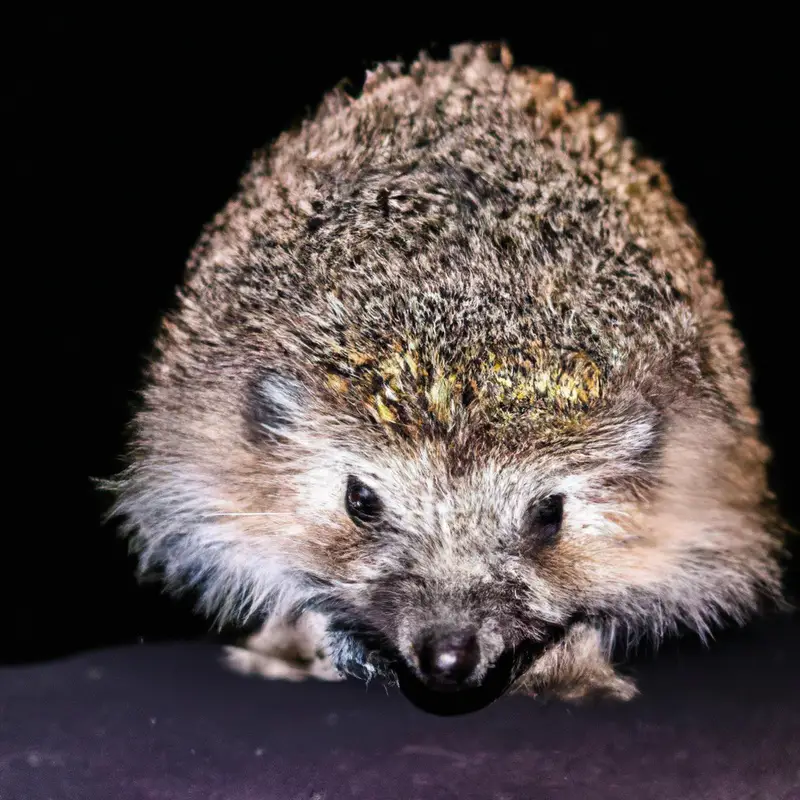
Hedgehogs as seed dispersers
Hedgehogs play a significant role in seed dispersal.
As they move around, their spines easily collect seeds from plants and carry them to different locations, allowing for the spread of plant species.
This helps with the establishment of new plants and enhances the overall biodiversity of ecosystems.
Hedgehogs are not only adorable creatures, but they are also important contributors to the balance of nature.
Hedgehogs and Biodiversity
Hedgehogs play a vital role in maintaining biodiversity.
Hedgehog’s role in maintaining ecosystem balance
Hedgehogs play a vital role in maintaining the balance of ecosystems.
By feasting on insects and small invertebrates, they help control populations and prevent outbreaks.
Additionally, their foraging habits help increase biodiversity by dispersing seeds.
The hedgehog’s burrowing behavior also aids in soil aeration and nutrient distribution.
Overall, these prickly creatures contribute to a healthy and thriving ecosystem.
Hedgehogs and their impact on local flora
Hedgehogs play an important role in maintaining the balance of local flora.
They contribute to the dispersal of plant seeds through their diet and movements.
As they forage for food, hedgehogs unknowingly transport seeds on their fur and through their droppings, aiding in the spread of plant species.
This helps to enhance biodiversity and promote the growth of different plants in the ecosystem.
Additionally, hedgehogs also help control pest populations, which indirectly benefits plants by reducing the damage caused by pests.
Their impact on local flora is thus vital for the healthy functioning of the ecosystem.
Hedgehogs and their relation to other species
Hedgehogs play an important role in their ecosystem by interacting with a variety of other species.
They are primarily insectivores, feeding on insects, slugs, and worms, which helps control their populations.
Hedgehogs also serve as prey for larger predators such as foxes and birds of prey, contributing to the overall food chain.
Additionally, hedgehogs contribute to seed dispersal through their eating habits, aiding in plant reproduction.
Their burrows also provide shelter for other small mammals and insects, promoting biodiversity.
Hedgehog as a Keystone Species
Hedgehogs play a crucial role as keystone species in the ecosystem.
The decline of hedgehogs can have significant effects on the entire ecosystem.
Definition of keystone species
A keystone species is a crucial organism in an ecosystem that has a significant impact on the overall biodiversity and functionality of that ecosystem. It plays a unique and irreplaceable role in maintaining the balance of the ecosystem.
Removing a keystone species can lead to major disruptions, affecting the abundance and diversity of other species.
Keystone species often have an influence that is disproportionate to their abundance. Examples include the sea otter, which helps maintain kelp forests, and the African elephant, which shapes savannah landscapes.
How hedgehogs act as keystone species
Hedgehogs act as keystone species by playing a vital role in maintaining the balance of ecosystems.
They are insectivores, feeding on a variety of insects and invertebrates, which helps control their populations.
By controlling the numbers of these prey species, hedgehogs prevent them from becoming overabundant and causing disruptions to the ecosystem.
Additionally, hedgehogs also aid in seed dispersal through their feces, promoting the growth of various plants and contributing to the overall biodiversity of their habitats.
Effects of hedgehog decline on ecosystems
The decline of hedgehogs in ecosystems can have significant effects.
- Pest control: Hedgehogs play a crucial role in controlling pest populations, such as slugs and snails.
- Biodiversity: Their decline may disrupt food chains, impacting the population of their prey and predators.
- Seed dispersal: Hedgehogs aid in seed dispersal by consuming fruits and spreading the seeds in their droppings.
- Soil health: Their digging and foraging behavior helps aerate the soil and distribute nutrients.
- Pollination: Hedgehogs also contribute to pollination by transferring pollen on their spines.
Overall, their decline can disrupt the delicate balance of ecosystems.
Conservation and Threats to Hedgehogs
Conservation efforts are crucial for protecting hedgehogs from threats such as habitat loss and human activities.
Habitat loss and fragmentation
Habitat loss and fragmentation are significant threats to hedgehogs. As natural habitats are destroyed for urbanization, agriculture, or other purposes, hedgehogs lose their homes.
Fragmentation occurs when their habitats are divided into smaller, isolated patches.
This makes it difficult for hedgehogs to find enough food, water, and suitable mates, leading to declines in their populations. It is crucial to protect and restore hedgehog habitats to ensure their survival in the ecosystem.
Human activities and hedgehog decline
Human activities have played a significant role in the decline of hedgehogs.
- Loss of habitats due to urbanization, agriculture, and development reduces the availability of suitable areas for hedgehogs to live and forage.
- Use of pesticides and habitat fragmentation disrupts their food sources and restricts their movement.
- Encounters with roads and vehicles result in numerous hedgehog fatalities each year.
- The use of garden netting, litter, and bonfires can also pose serious hazards to hedgehog populations.
Understanding and addressing these human activities is crucial for conserving hedgehogs and reversing their decline.
Conservation efforts for hedgehog protection
Conservation efforts for hedgehog protection involve various measures aimed at ensuring the survival and well-being of these adorable creatures.
Some key initiatives include:
- Creating hedgehog-friendly gardens by providing access through small holes or gaps in fences and adding hedgehog houses or piles of leaves and logs for shelter.
- Reducing the use of pesticides and chemicals in gardens to protect hedgehogs’ food sources.
- Raising awareness about hedgehogs and their importance in the ecosystem, encouraging people to avoid activities that can harm them, such as using garden netting without checking for hedgehogs first.
- Supporting local hedgehog rescue organizations and reporting any injured or sick hedgehogs to wildlife authorities.
- Promoting wildlife corridors and maintaining suitable habitats, such as hedgerows, meadows, and woodlands, for hedgehogs to roam and forage. Together, these efforts contribute to the overall conservation and protection of hedgehogs in their natural habitats.
Frequently Asked Questions about Hedgehogs’ Role in Ecosystem
Are hedgehogs beneficial to the environment?
Hedgehogs are indeed beneficial to the environment. Here’s why:
- Pest Control: Hedgehogs have a diet that consists of insects, snails, slugs, and other small pests. By feasting on these creatures, hedgehogs help to naturally control their population, reducing the need for harmful pesticides.
- Seed Dispersion: Hedgehogs unknowingly aid in seed dispersal. As they move around, seeds and fruits attach to their spines or fur, which can then be transported to new areas. This helps plants and trees spread their seeds and regenerate in different locations.
- Biodiversity: By playing a role in pest control and seed dispersion, hedgehogs contribute to maintaining a healthy ecosystem. They help preserve the balance between various plant and animal species, promoting biodiversity.
- Gardeners’ Allies: Hedgehogs are beneficial for gardeners as they can help keep gardens free from destructive pests. Their presence can reduce the risk of plant damage, making them valuable allies in maintaining a thriving garden.
In short, hedgehogs play an important role in the environment by controlling pests, aiding in seed dispersal, promoting biodiversity, and assisting gardeners. Their contribution helps maintain a healthy and balanced ecosystem.
Do hedgehogs eat harmful insects?
Hedgehogs are known for their appetite for insects, and yes, they do eat harmful ones too. They play a valuable role in the ecosystem by feasting on pests like slugs, snails, and various insects that can damage plants and gardens.
This natural pest control makes them beneficial to farmers and gardeners.
So, if you have a hedgehog visiting your yard or garden, consider it a helper in keeping harmful insects in check.
Are hedgehogs endangered?
Hedgehogs are indeed endangered. Due to habitat loss, changes in land use, and human activities such as pesticide use and road accidents, hedgehog populations have been declining rapidly.
It is crucial that we take immediate action to protect these adorable creatures and ensure their survival in our ecosystems.
Final Verdict
Hedgehogs play a crucial role in the ecosystem as both predators and seed dispersers. They help control insect populations, maintain ecosystem balance, and promote biodiversity by interacting with various species.
Their decline poses a threat to ecosystem health and highlights the importance of conservation efforts.
Hedgehogs are beneficial to the environment, eating harmful insects and aiding in seed dispersal. While they are not currently considered endangered, their habitats are being impacted by human activities.
To protect hedgehogs and ensure their continued ecological role, it is vital to prioritize habitat preservation and raise awareness about their importance in our ecosystems.

